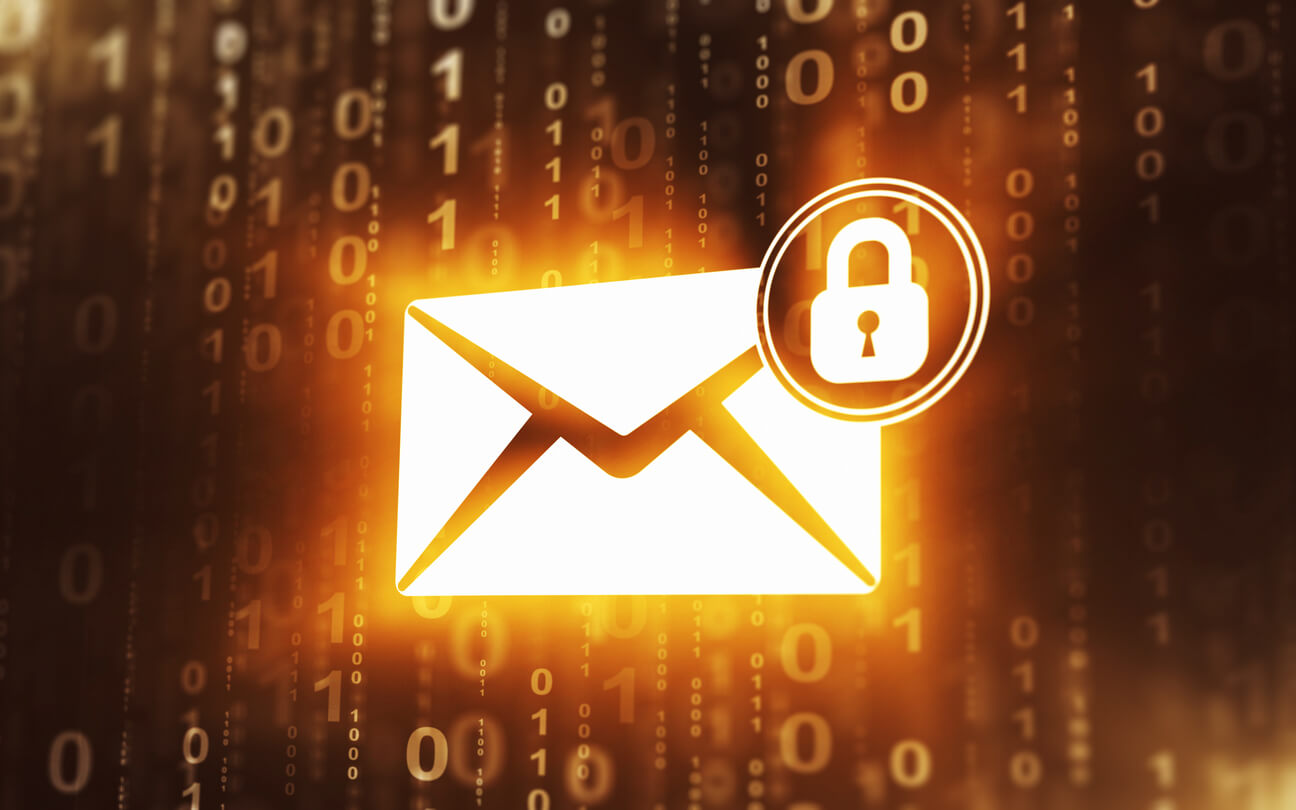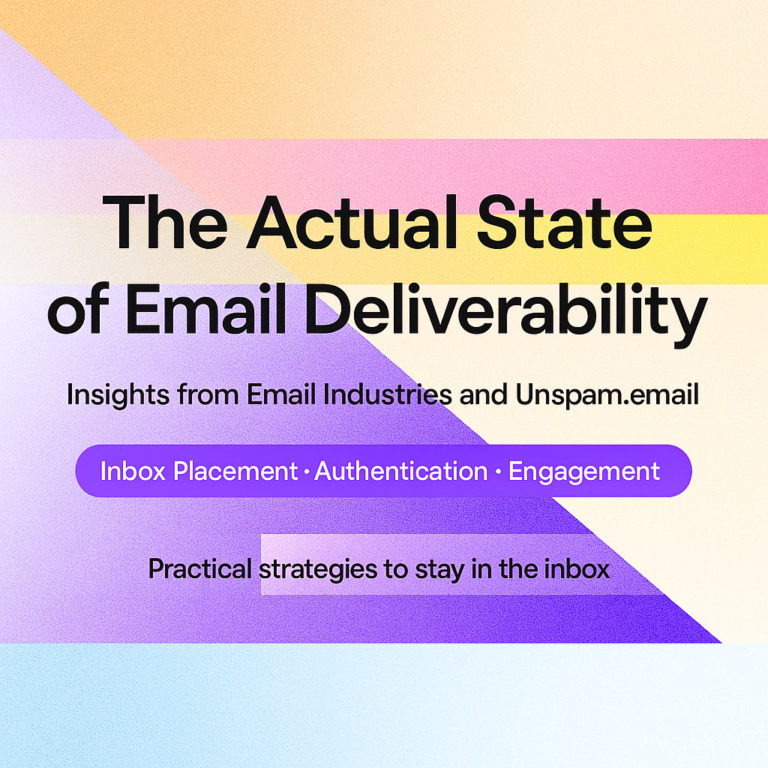Creating trustworthy messaging for your brand is essential to create a strong relationship with your customers. Sending secure emails is simple when you have the right strategy and protocols to verify each one that you send.
First theorized and implemented in the early 2000s, SPF and DKIM security protocols verify and authenticate emails. In the two decades that have followed their inception, email security professionals have been relying on these two systems to ensure that each message they send out is secure and to prevent malicious cyberattacks. Unfortunately, since the introduction of the two strategies, many users have been confused between the two options.
This guide will go through everything you need to know about SPF vs DKIM. By the end, you will know how each system works, when to use which one, and why each protocol produces the results it does.
Understanding SPF (Sender Policy Framework)
What is SPF?
SPF is an email security system that prevents malicious users from potentially scamming others by pretending to be you or your company. It does this by creating a whitelist of IP addresses within an email server to verify if each email comes from a trusted source or not. SPF first began in 2006 and was most recently updated to standard 7208 in 2014. It has spent the last two decades as one of the most fundamental systems of security for the modern email security professional.
How SPF Works
SPF works by letting companies or users establish which servers are authorized to send emails from their domain. This creates a connection between the unique server and the branded domain that cannot be replicated by impersonators. Anyone can establish an authorized mail server through DNS (Domain Name System) by publishing their unique SPF information within the DNS TXT files.
If a relay server is used to try to spoof your domain, your SPF system can pick this up and block those emails from sending.
Advantages and Limitations of SPF
SPF’s central advantage is that out of all the established email security protocols, it is the most widely used and the easiest to set up.
One central limitation of SPF is that there is no inbuilt action taken to prevent an email from sending or received if it fails SPF protocol. This means that the user must build other protocols to step in once an email has been confirmed as not passing SPF standards. You can use a DMARC strategy to set this up. This takes in the information provided by SPF and determines what to do with it, whether this means rejecting emails entirely or letting certain conditions pass.
Another issue with SPF is that it is only one layer of authentication. Emails that use both DKIM and SPF verification will be more secure as they do not rely on just one system to ensure their security. A hacker would need to pass two overlapping systems of security to spoof your email domain which is much more difficult than one.
Decoding DKIM (DomainKeys Identified Mail)

DKIM is an email security protocol that works in a very similar way to SPF. Instead of using a whitelisted list of servers to verify emails though, DKIM gives each email a signature that establishes its unique connection to the domain. This is then verified by incoming and outgoing servers to be labeled as either trustworthy or insecure.
DKIM enhances email security by providing another way for servers to verify that emails are coming from safe and trusted sources. This prevents impersonation of your company’s email domain which could be used for phishing attempts or any other form of malicious scamming.
The main benefit of implementing DKIM along with SPF is that you now have two separate systems to authenticate emails, meaning you are less vulnerable to attacks. However, mainly email security professionals find it more difficult to implement DKIM’s key pair system as opposed to SPF’s whitelist system. While it may appear a bit more challenging, both security protocols are simple to set up once you know the proper steps.
Key Differences Between SPF and DKIM
DKIM verifies emails by checking whether their set of public and private keys match the domain that you are sending your email from. SPF verifies emails by checking your IP address in a whitelist for your domain, which includes everyone who is authorized to send emails on your behalf.
Unlike SPF, DKIM checks if the body or header of the email has been changed since leaving the outgoing server. While DKIM also verifies the authority or the original sender just like SPF, it also ensures that your emails have not been modified while sending from one server to another. Malicious attacks can happen this way through the use of relay servers which change emails to include cyberattacks.
How SPF and DKIM Work Together
While you can use SPF and DKIM separately, it is recommended that you utilize both protocols. SPF cannot ensure that emails are unmodified in transit, while DKIM can. DKIM cannot check IP addresses against a list of verified senders, while SPF can.
The point is that while DKIM and SPF might seem similar, their intricate differences mean that they fill in for each other’s faults. Using both to create a lattice of security protocols that overlap and support each other creates a much more secure system of security than just one email protocol.
Implementing SPF and DKIM

Setting up SPF is simple when you know the correct steps. Configuring SPF records involves creating a whitelist of verified senders who are allowed to use your domain to send emails. The domain administrator must implement this list into their DNS records. An example of this record looks like this: “v=spf1 ip4:182.155.0.1 -all”.
This record works by identifying an IP address that is verified to send emails from and rejecting every email that attempts to use the domain while not coming from this IP address. There are various modifiers you can use to adjust your records, with common additions “a” and “mx” used to verify domain names that have an address or MX record.
To go further with your email security strategy, you can also set up a DMARC protocol that decides what to do with any emails that are determined insecure by SPF or DKIM. Many email security professionals find it challenging to determine the differences between SPF vs DMARC and DMARC vs DKIM, but the division between these protocols is simple. SPF and
DKIM are two similar authentication protocols that use different methods to determine whether an email came from a verifiable sender or not. DMARC is the strategy you use with this information whether you choose to reject all emails that do not make it past SPF or DKIM, or simply let them send but mark them as suspicious.
Common Challenges and Solutions
DKIM and SPF setups do not always work the way you want them to. It is essential to stay vigilant and fix any issues that come up.
One of the most common problems when using the SPF protocol is an email “fail”, where the email does not get delivered because the sender’s IP address does not match the SPF policy. This does not always lead to a notification of this result so it is important to be aware of this issue and check for it yourself. There are a few ways to avoid failing SPF.
First, you can test your email strategy before deploying it. The methods for doing this depend on your platform of choice. For example, on Google, you can test your SPF and DKIM systems by sending a test email to yourself and checking the details of the opened message. If your security protocols worked, the email should show “mailed-by: your domain” and “signed-by: your domain”.
Second, you can change your SPF record to perform “hard” fails instead of “soft” fails, which means your emails will decline to send and notify you instead of silently sending to your recipient’s spam folder. This is an easy switch: simply change “~all” to “-all” in your SPF record.
Similarly, when it comes to DKIM, many issues can arise when it comes to implementing your keys. Whether you generate your keys manually or through the system of your internet service provider, it is important to stay connected with your email provider. This communication is necessary to ensure that your private key is properly set up to protect your emails.
Some servers can reject DKIM-authenticated messages for any reason. It is essential to initiate and maintain contact with these servers to make sure your emails are sent regardless. Test out your email strategy with multiple servers and receivers to ensure that there will be no issues once it is deployed.
The Future of Email Security

Unfortunately, the emergence of AI has developed innovative and malicious ways for scammers to get around established email security protocols. Eventually, there will be new ways to overcome both SPF and DKIM that we are not yet aware of.
Many email service providers are looking at new ways for how they can battle cyberattacks. Google and Yahoo will both provide new email authentication protocols for high-volume email providers from the beginning of 2024.
Expect this to just be the beginning. Email service platforms are fighting to have the best email security protocols, which means SPF and DKIM systems will always evolve to face upcoming threats. If you stay just as vigilant and attentive as your email service provider, then you will always be two steps ahead of anyone who tries to attack your email.
Conclusion
SPF and DKIM both play a critical role in enhancing email security and integrity. Each of these protocols is used to verify that emails come from the correct sender, preventing your customers from cyberattacks.
This guide has focused on detailing SPF and DKIM individually, highlighting their differences, and giving guidance on implementation and troubleshooting. All of this information can be used to craft the perfect email security strategy for your brand.
If you’re still struggling with the best way to implement SPF and DKIM protocols, it may be time to consult an email deliverability consultant.





